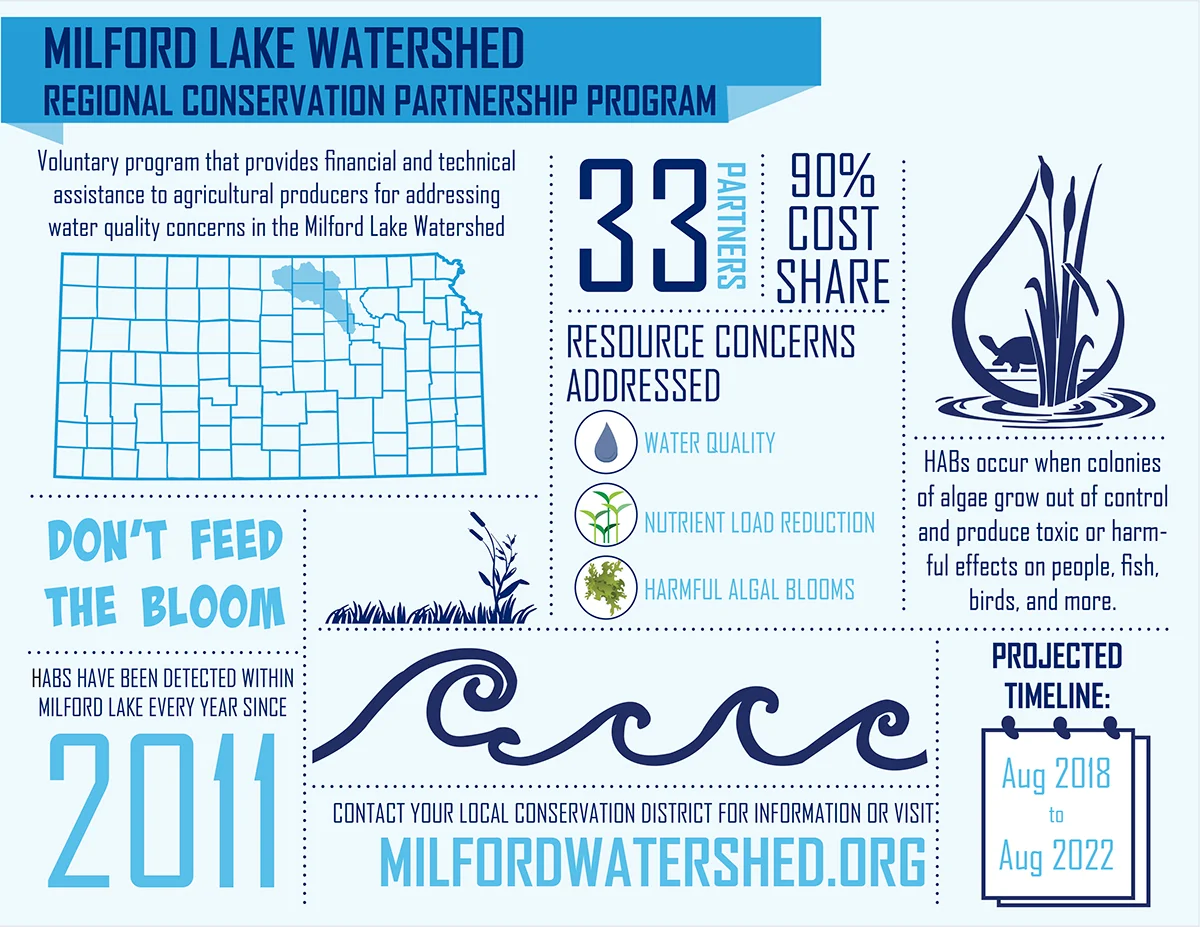The Milford Lake Watershed is having frequent problems with water quality.
It’s having a big effect on the natural resources that all of us in Kansas share.
The biggest threats are:
Harmful algae blooms
When excess nutrients and fertilizers are washed into the watershed, it feeds algae downstream in Milford Lake. When conditions are right, huge blooms of algae occur in the lake. Certain types of harmful algae produce a concentrated toxin called microcystin when blooming, which is hazardous or lethal to people, pets, livestock, and wildlife.
Every summer since 2011, harmful algae blooms have shut down large sections of the lake, hurt fish and bird populations, and have threatened the drinking water of Kansas communities downstream. The frequency of harmful algae blooms affecting Milford has steadily increased over the last ten years.
Sedimentation
Soil runoff is also washing into the watershed and settling to the bottom of Milford Lake. The accumulating sediment is steadily reducing the lake's storage capacity.
Less capacity in Milford means the reservoir is less effective for holding water during heavy rainfall and flooding, and that’s dangerous for farms and towns downstream.
The good news is that there’s lots of ways to help improve the situation at Milford.
Through the Milford Watershed Regional Conservation Partnership Program (RCPP), financial resources and incentives are available to help agriculture producers make upgrades to protect the watershed.
The Milford Watershed RCPP is a collaborative effort to improve water quality in Milford Lake and upstream. The program is a result of a $2.88 million grant awarded through the Natural Resources Conservation Service (NRCS). The focus of the program is on the Kansas portion of the watershed within the Lower Republican Basin in Clay, Cloud, Geary, Dickinson, Jewell, Mitchell, Republic, Riley, and Washington Counties.
The project serves as one of the largest efforts undertaken within the Milford Lake Watershed to bring partners together in order to implement conservation practices. The Kansas Water Office is the lead partner, and numerous regional entities are contributing to the project.





